alexfm
Explorer
First outing of this new year!
My New Year's Resolution for 2014 was to take as many trips as possible, day trips or extended. An addded bonus would be those with extended amounts of dirt, such as the one mentioned here. :sombrero:
My girlfriend and I volunteered to help a friend of mine with some research she is working on. Little background, a climber friend of mine is pursuing her Ph.D in Geology, and as part of her research she needed to collect data on volcanic bombs at Kilbourne Hole. A volcanic bomb is simply a bit of lava that was spewed from the volcano and solidified in mid air before hitting the ground. Kilbourne Hole is a large volcanic crater resulting from magma penetrating the earth's surface underneath the Rio Grande River approximately 200,000 years ago. Kilbourne Hole itself is located outside of Santa Theresa, New Mexico and the drive is mostly on dirt roads leading to the crater, and rough two track trails leading in and around the crater itself.
A small panorama of the crater:
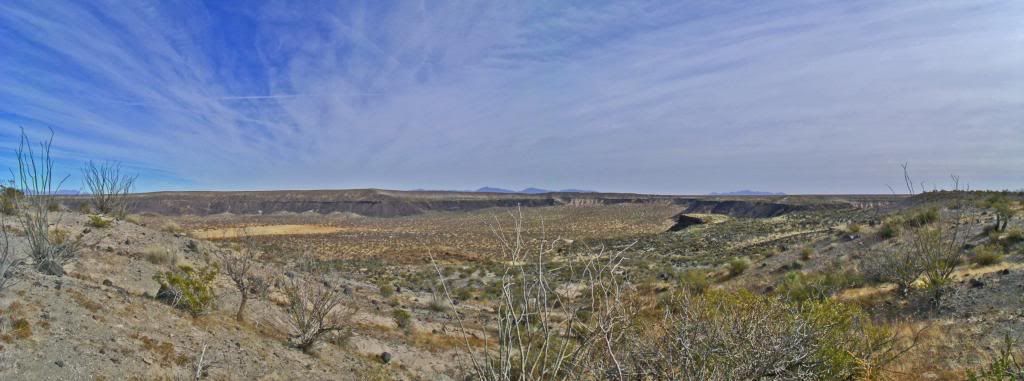
After we arrived at the crater, we parked both cars and discussed the plan for the day. We would be looking for volcanic bombs to measure with a ground penetrating radar. We decided to scout around for good bombs to study, and all loaded up into the truck. While I didn't get to drive, just riding in it was surprisingly comfortable for a base model truck. I was very impressed with it, as was my friend who was driving.
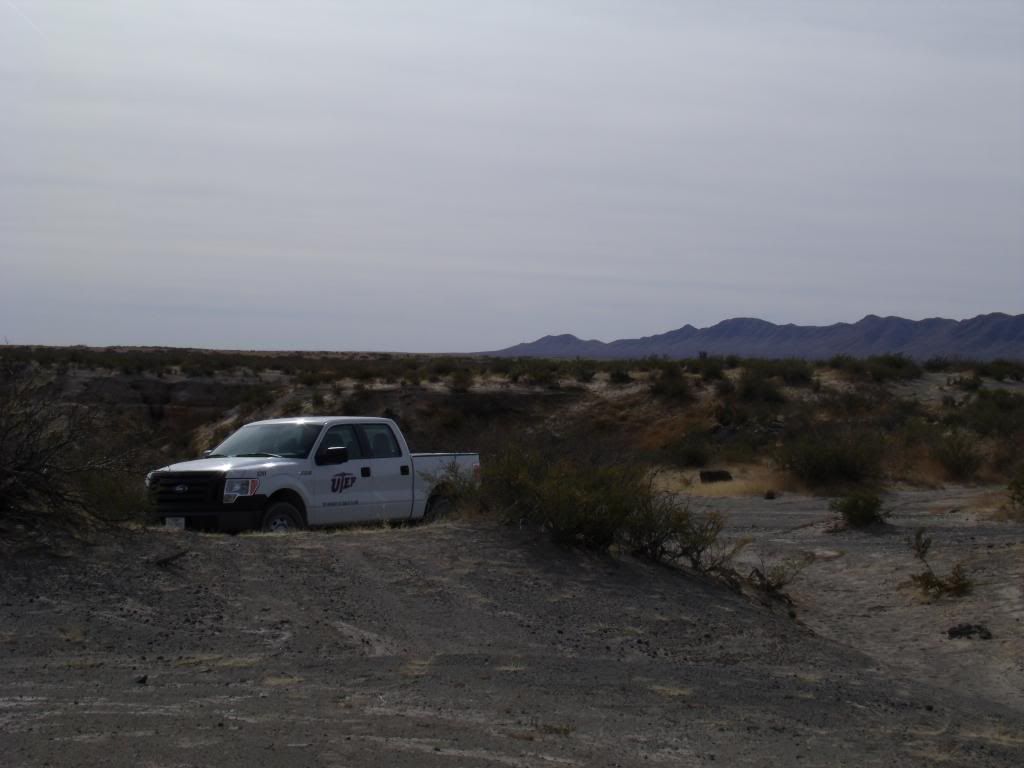
We drove about a half mile away from where we left my rig, and got out and started looking around. While there are volcanic bombs everywhere, the ones we were looking for needed to have distinct features. The bombs we were hunting needed to be ones that landed in wet ash, as they leave ripple patterns and can be measured to calculate the force necessary to move the bomb by the eruption.
These were the first couple bombs that we found:
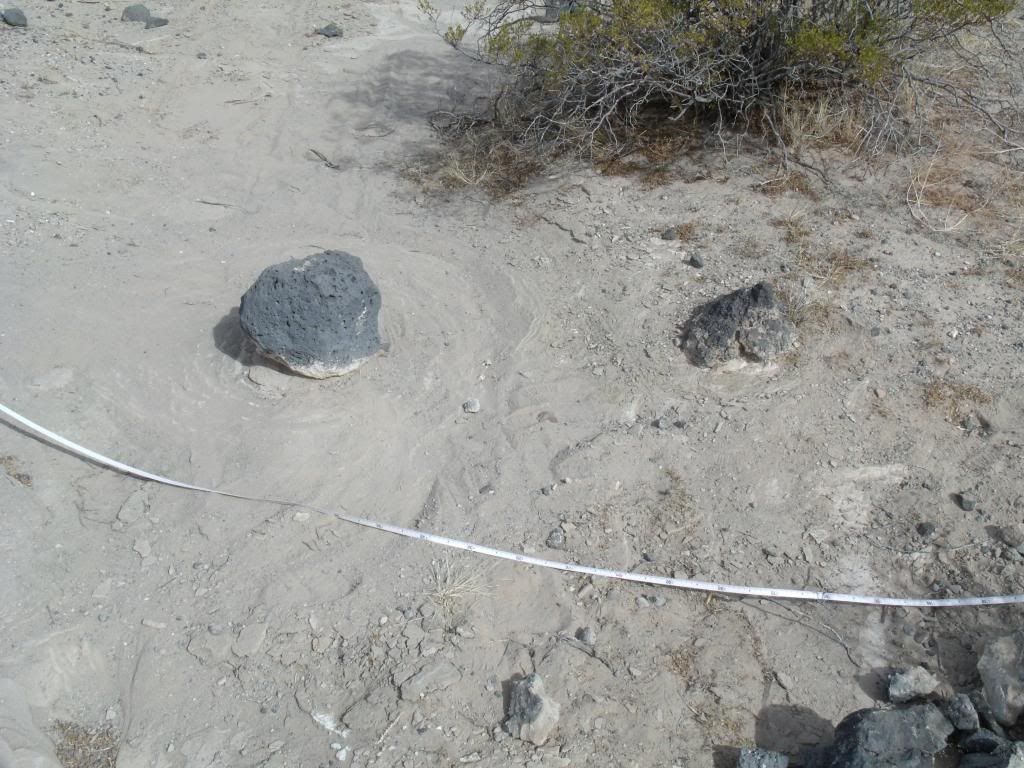
After finding suitable bombs, we pulled out the Ground Penetrating Radar (GPR for short), and scanned them to measure depth and record our data.
Our friend Pollo piloting the GPR:
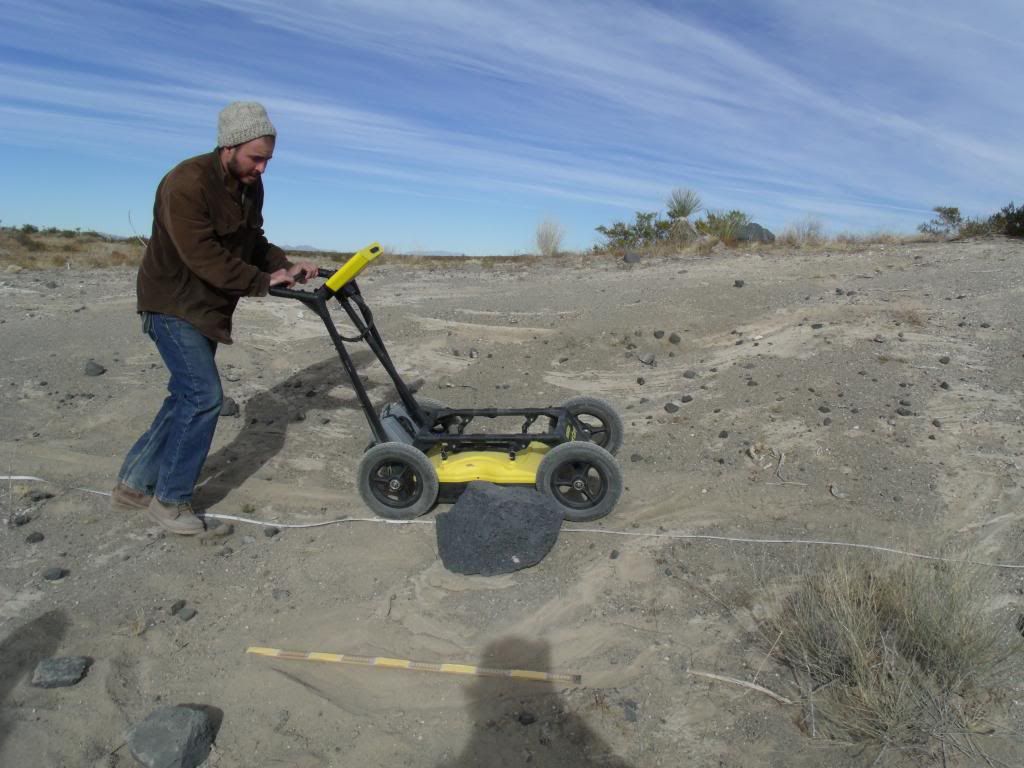
The GPR itself:
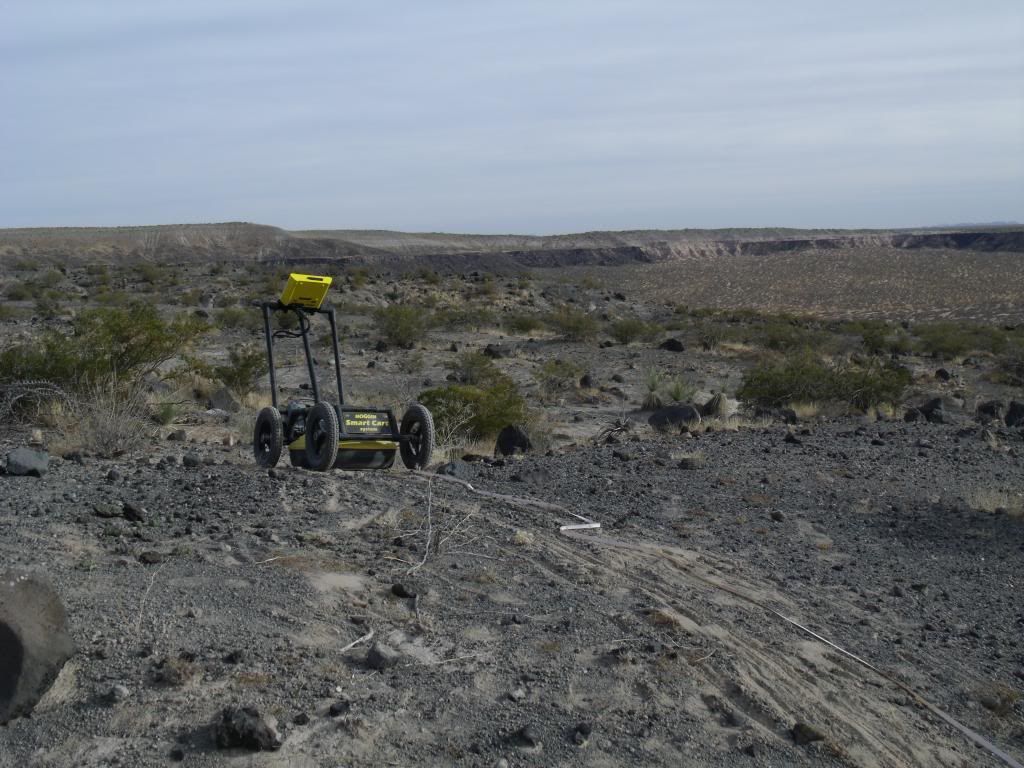
After scanning several bombs, we head back to my Jeep and have lunch. We decided to head to the other end of the crater to look for more bombs, and this time around, we took both rigs as there was a lot of deep sand and it would be easier to take both vehicles to recover each other if necessary.

It was in this area, across the crater from where we arrived, that we found several excellent bombs, including this wonderful example:
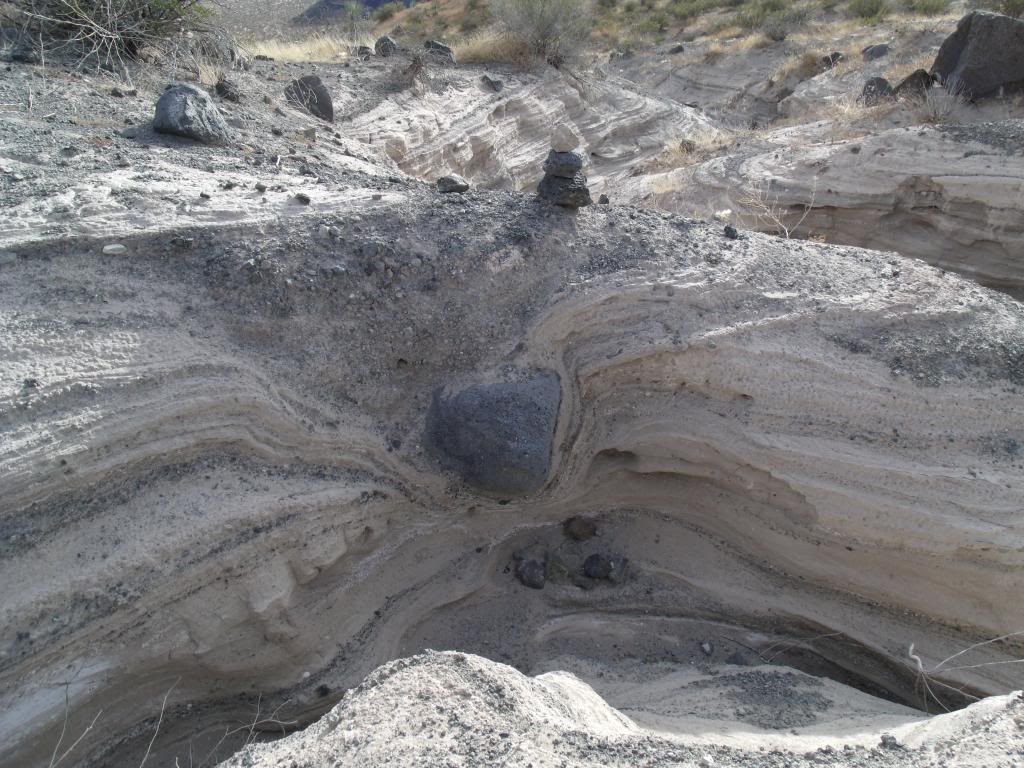
Here, you can clearly see the bomb itself, as well as the sac (the rippled area around it that was created during impact).
Also in this area, as well as all around the crater itself, we found a great quantity of olivine, and several examples that may be gem grade which is called peridot.
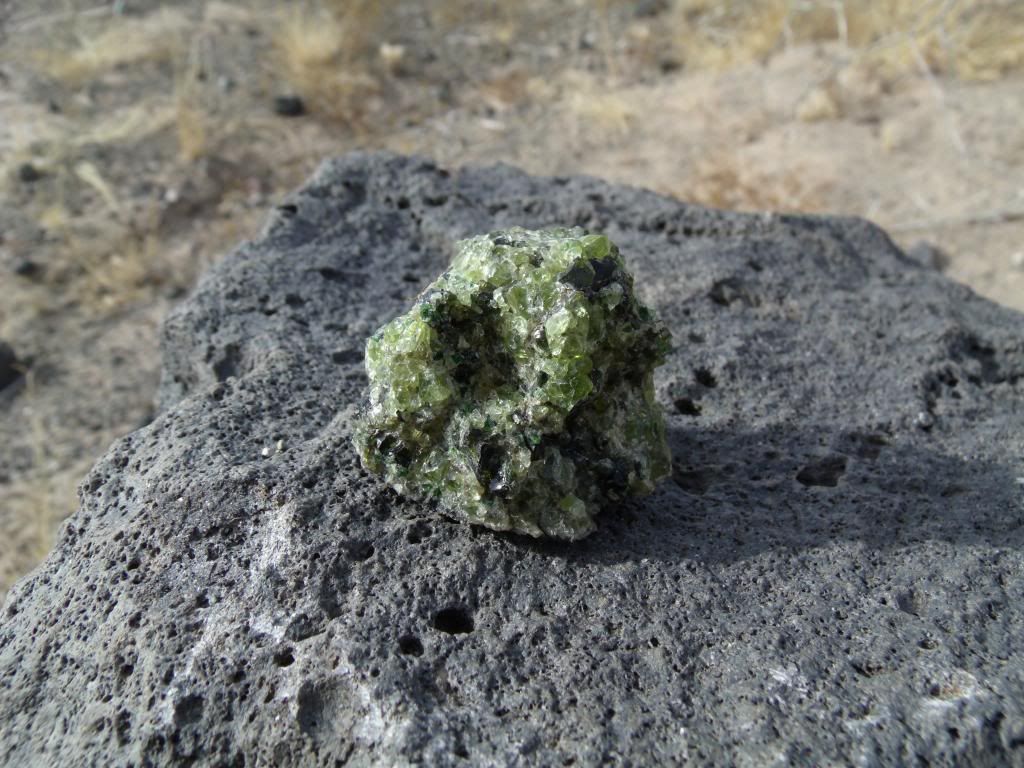
Lodes of this are everywhere, ranging from golf ball sized to several that we kept that were bowling ball sized.
My New Year's Resolution for 2014 was to take as many trips as possible, day trips or extended. An addded bonus would be those with extended amounts of dirt, such as the one mentioned here. :sombrero:
My girlfriend and I volunteered to help a friend of mine with some research she is working on. Little background, a climber friend of mine is pursuing her Ph.D in Geology, and as part of her research she needed to collect data on volcanic bombs at Kilbourne Hole. A volcanic bomb is simply a bit of lava that was spewed from the volcano and solidified in mid air before hitting the ground. Kilbourne Hole is a large volcanic crater resulting from magma penetrating the earth's surface underneath the Rio Grande River approximately 200,000 years ago. Kilbourne Hole itself is located outside of Santa Theresa, New Mexico and the drive is mostly on dirt roads leading to the crater, and rough two track trails leading in and around the crater itself.
A small panorama of the crater:

After we arrived at the crater, we parked both cars and discussed the plan for the day. We would be looking for volcanic bombs to measure with a ground penetrating radar. We decided to scout around for good bombs to study, and all loaded up into the truck. While I didn't get to drive, just riding in it was surprisingly comfortable for a base model truck. I was very impressed with it, as was my friend who was driving.

We drove about a half mile away from where we left my rig, and got out and started looking around. While there are volcanic bombs everywhere, the ones we were looking for needed to have distinct features. The bombs we were hunting needed to be ones that landed in wet ash, as they leave ripple patterns and can be measured to calculate the force necessary to move the bomb by the eruption.
These were the first couple bombs that we found:

After finding suitable bombs, we pulled out the Ground Penetrating Radar (GPR for short), and scanned them to measure depth and record our data.
Our friend Pollo piloting the GPR:

The GPR itself:

After scanning several bombs, we head back to my Jeep and have lunch. We decided to head to the other end of the crater to look for more bombs, and this time around, we took both rigs as there was a lot of deep sand and it would be easier to take both vehicles to recover each other if necessary.

It was in this area, across the crater from where we arrived, that we found several excellent bombs, including this wonderful example:

Here, you can clearly see the bomb itself, as well as the sac (the rippled area around it that was created during impact).
Also in this area, as well as all around the crater itself, we found a great quantity of olivine, and several examples that may be gem grade which is called peridot.

Lodes of this are everywhere, ranging from golf ball sized to several that we kept that were bowling ball sized.



